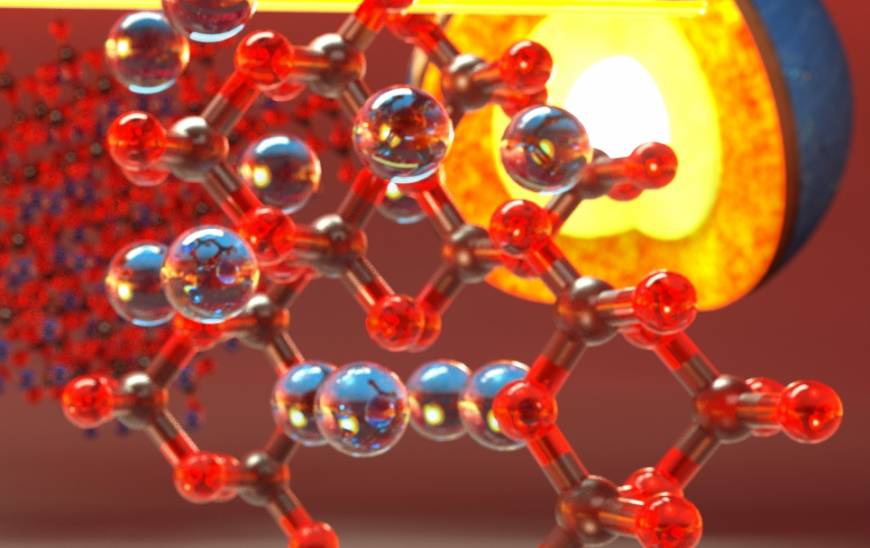The Stanford School of Earth, Energy & Environmental Sciences is now part of the Stanford Doerr School of Sustainability.
This page is currently being maintained for archival purposes only. For the latest information, please visit us here.
Novel Carbon Bonding at High Pressure
A team that included Wendy Mao has discovered evidence of a new form of carbon that naturally occurs in the deep Earth.
<p>Deep Carbon Observatory</p>
February 18, 2015

<p>Credit: Giulia Galli</p>
Only a small fraction of our planet’s total carbon budget is found at the surface. In fact, Earth’s mantle is thought to be the largest carbon reservoir. Carbonates, and in particular ferromagnesite ((Mg,Fe)CO3), are likely candidates for deep-Earth carbon storage and therefore play a key role in the deep carbon cycle. The behavior of these carbonates at the high pressure and temperature conditions of Earth’s interior is therefore of great interest for understanding global carbon cycling and storage.
A new paper, appearing in the 18 February 2015 issue of Nature Communications, reports unequivocal experimental evidence of tetrahedrally coordinated carbon in high pressure carbonates, obtained by combined experimental and theoretical studies carried out in Wendy Mao’s lab at Stanford University, Giulia Galli’s lab at the University of Chicago, and Zhenxian Liu’s synchrotron infrared beamline, which is managed by the Carnegie Institution at the National Synchrotron Light Source at Brookhaven National Laboratory.
The scientists identified a unique vibrational signature present only in the high-pressure phase, and thus a new carbon-oxygen bond formed under pressure. In particular, the scientists were able to assign the new vibrational signature to tetrahedrally coordinated carbons with asymmetric C-O bonds.
Ferromagnesite represents an important rock-forming mineral group, fundamentally distinct from silicates in Earth’s crust; at low pressure carbon bonds to three oxygen atoms, while silicon bonds to four. Tetrahedrally coordinated carbonates, as described in this new publication, likely exhibit dramatically different behavior compared to three-fold coordinated carbonates, including altered reactivity with other mantle phases and changes in chemical melt properties. This bonding behavior could therefore have significant implications for carbon reservoirs and fluxes, as well as for our understanding of the global geodynamic carbon cycle.
Mao, who is an associate professor of Geological and Environmental Sciences, said the discovery could indicate that tetrahedrally coordinated carbonates may be a major host for carbon in the Earth’s lower mantle. "Its very different structure compared to carbonates on our planet’s surface will likely result in very dramatically altered physical and chemical properties, which has implications for how carbon behaves in the deep Earth."

While at the surface of planet carbon bonds to three oxygens in carbonates; in the lower mantle, under existing temperatures and pressures, carbon adopts tetrahedral coordination. Credit: Eglantine Boulard and Sophie Lietar
Reference:
1. Boulard E, Pan D, Galli G, Liu Z, Mao WL (2015) Tetrahedrally coordinated carbonates in Earth’s lower mantle. Nature Communications 6, Article number: 6311 doi:10.1038/ncomms7311



